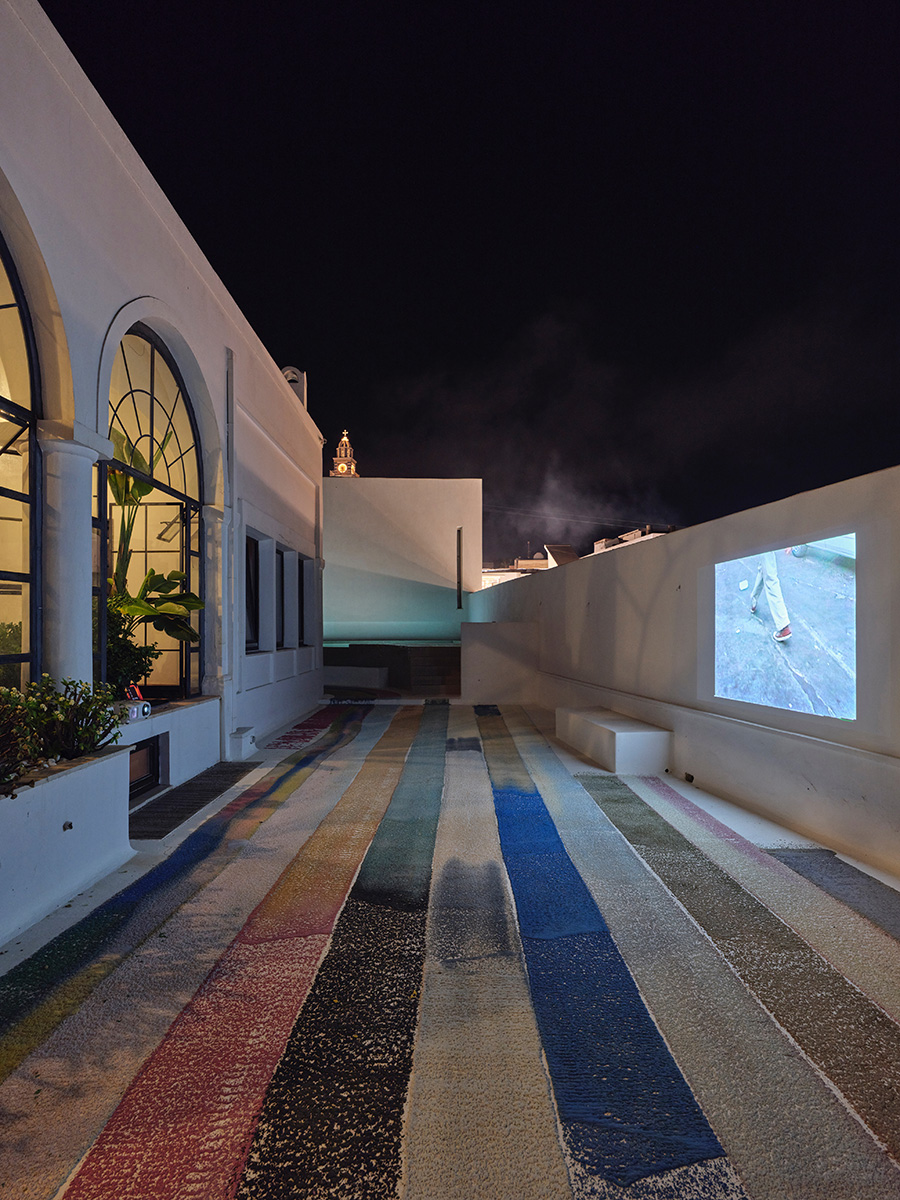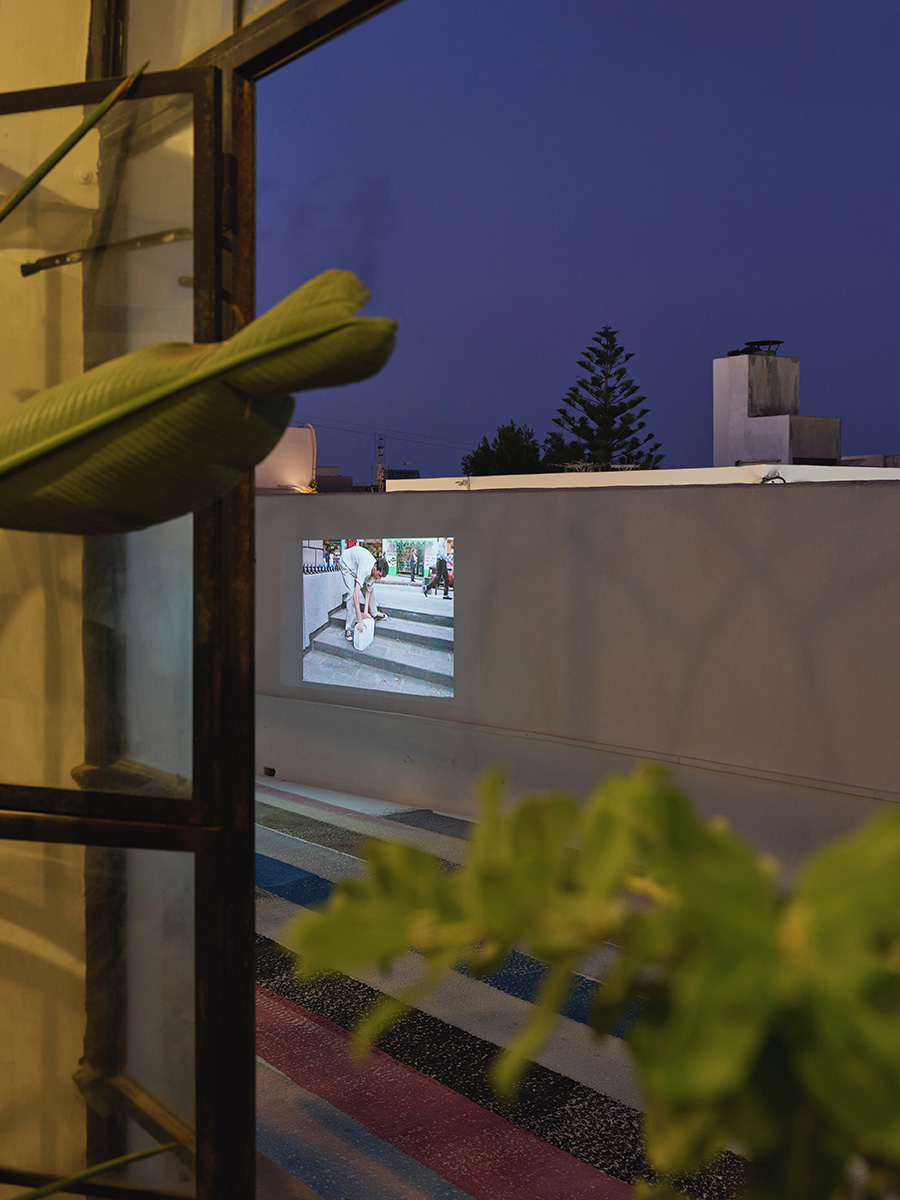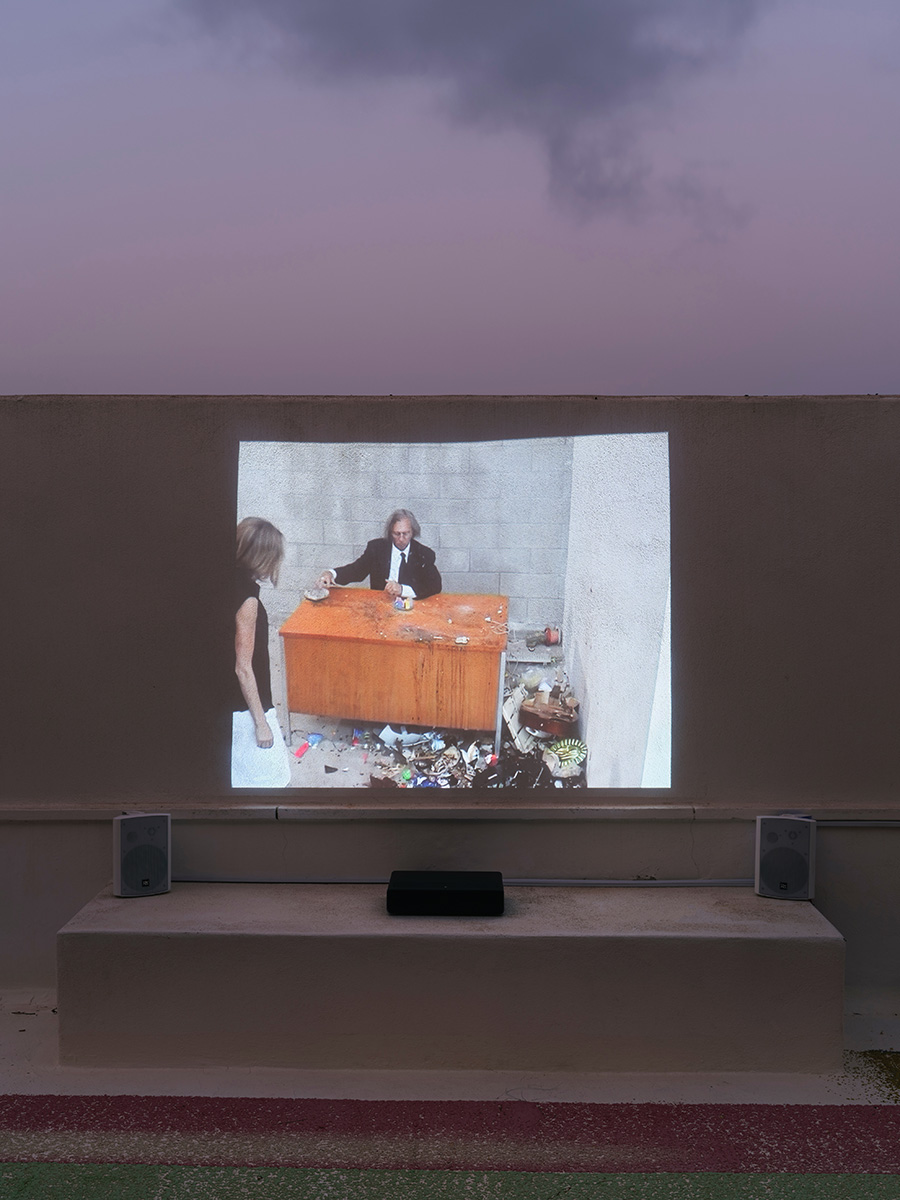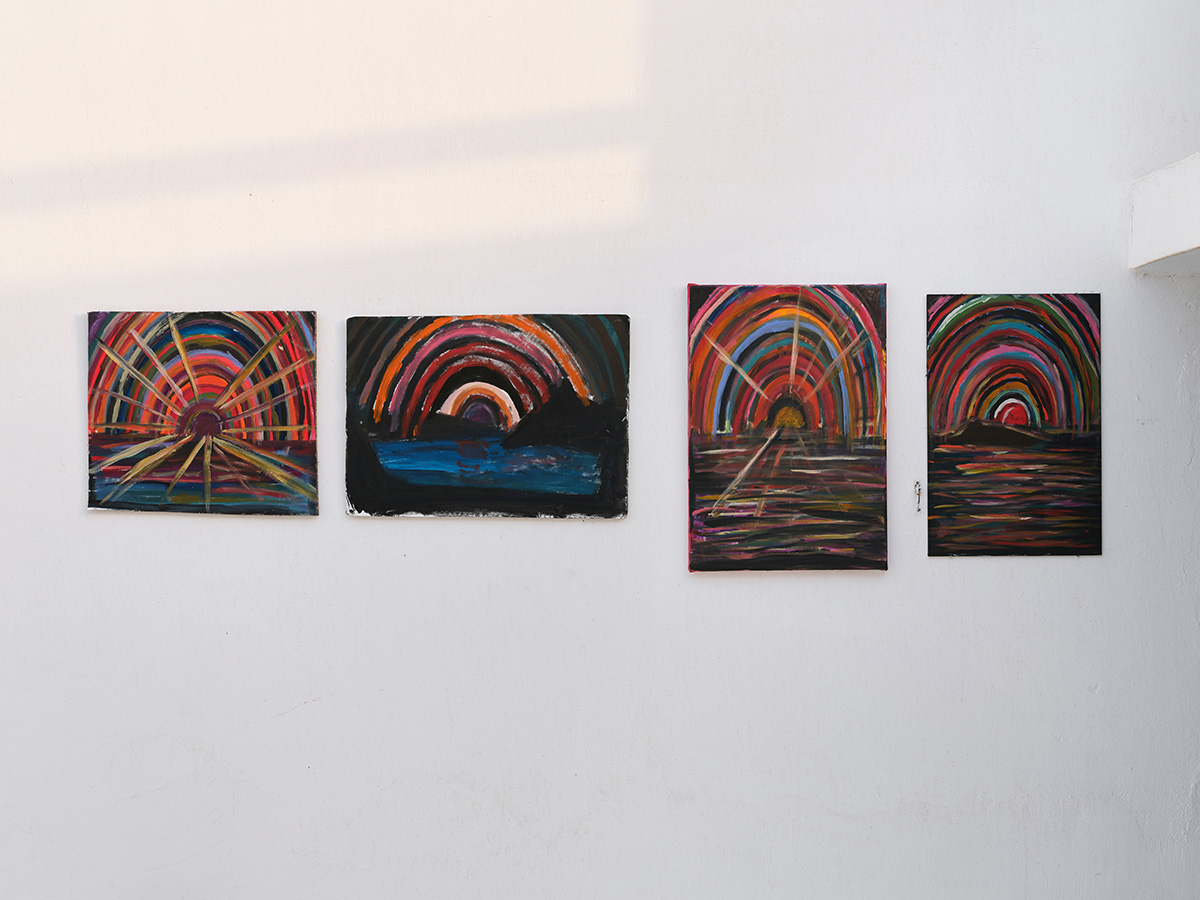Cory Arcangel, Michael Dean, Jota Mombaća, Tiffany Sia, Kazuyuki Takezaki
bg-color-20muralpaintingperformancesoundvideoMegan Dominescu
bg-color-11textile artSALOME VOEGELIN – INAUDIBLE DISASTER WARNING
soundRAVIV GANCHROW – IMAGING FATE
soundSTILL HERE II
installationsoundTYMPANIC TETHER
installationsoundRAINBOW STUMPS
islandperformance & writingsoundSLOW RISING WHITE SALES
performance & writingRE-INVITED DEAD FOLKS
performance & writingFRONT OF HEAD VOID
performance & writingWE ARE SMALL
performance & writing3102
islandperformance & writingTWO THOUSAND THIRTEEN – GO NEW ENCOUNTERS
islandCLOWNING IN THE NEW YEAR
installationislandMANN-LY PURSUITS
islandSANTO-GYPSIES
islandperformance & writingHALLOWEEN NEXT – MIDNIGHT DECOMPOSURE
installationislandTURNING RADIUS OF OUTER WINGTIP
islandperformance & writingMANIFESTO-ING
islandperformance & writingLONDON IS EMPTY, BUT HAS AMAZING CAB DRIVERS
installationislandperformance & writingMANIFESTO FOR MANIFESTOS IN CRISIS
islandCARL WEBER ARRIVES ON SANTORINI
islandJULY 18TH 2012
islandKYIV DIARY – DAY LAST
installationislandperformance & writingKYIV DIARY – DAY 2
installationislandperformance & writingISLANDS’ UNDERSIDES
islandperformance & writingNEW BLOOD GREEK CINEMA
installationislandINTERN’S DIARY – JUNE 26TH
islandperformance & writingINTERN’S DIARY – JUNE 25TH
installationislandperformance & writingINTERN’S DIARY – JUNE 24TH
islandperformance & writingINTERN’S DIARY – JUNE 23RD
islandperformance & writingNika Neelova
artbg-color-6installationRaphael Hefti
artbg-color-9installationLeon Pozniakow
artbg-color-7installationTrajal Harrell
artbg-color-8performanceOláh Gyárfás
bg-color-3installationsculptureCarl Weber
archivebg-color-13videoIntern’s diary – June 22nd
islandperformance & writingPraire, tights factory, screen
islandIsland-Ports
islandResidency start!
islandKyiv Diary – Day 1 May 22
installationislandperformance & writingClaire Bishop and our literal speed
islandtalkAmbient Santorini
installationislandFictive pursuits
islandperformance & writingThe long braid, the balcony, the arrow
islandperformance & writingPseudophotography
photographyTragic historiography
islandperformance & writingSign competition
installationislandperformance & writingsoundThe copyist
installationislandperformance & writingsoundA house with a view
installationperformance & writingsoundCurtis Tamm
bg-color-15installationSandwich Gallery
bg-color-14installationThomas Myernick
bg-color-12installationRadio Free Santorini + Aural Lighthouses
bg-color-5installationperformanceradiosoundtalkNew Blood Greek Cinema
bg-color-4videoAndi Otto
bg-color-3installationlive performancesoundvideoNina Fischer & Maroan El Sani
bg-color-2installationOrder of the Third Bird
bg-color-1performancevideoJimmie Durham, Francis Alÿs, Tobias Spichtig
The exhibition Heaven or Earth brings together the works of three artists in the spaces of the Santozeum for an evening presentation. This small show forms the second part of Weather or Not, last year’s exhibi- tion project.
While last year’s works placed a stronger focus on weather in all its force and portraying the destruction of Santorini through climate change and human impact, Heaven or Hell takes a more poetic approach. Perhaps it is also a capitulation to destruction – a final moment of reflection. Santorini, an island created by the volcanic eruption in 1600 BC and today renowned for its dramatic sunsets, has undergone rapid changes in the recent decade. Mass tourism has grown considerably; coupled with rapidly rising temperatures, the island has become a symbol of humankind’s destruction of its own habitat.
In Jimmie Durham’s work Smashing (2004), the artist himself sits at a desk while another person brings him one object after another. He briefly inspects each object, then takes a large stone and smashes it. Afterwards, he prepares a certificate confirming that the object has been destroyed, stamps and signs it, and hands it to the “client.”
Jimmie Durham (1940–2021) was an artist, poet, and writer living in Europe. Since the early 1960s, he was politically active in the American civil rights movement and began working as a sculptor in 1964. The relationship between history and environment, architecture and monumentality, as well as a critical stance towards political power structures and narratives of national identity, were often central to his artistic and literary practice. In sculptures, films, drawings, and texts, Durham explored behaviors and social norms, as well as humanity’s relationship with nature across different cultures and societies.
Smashing can be read as a response to the repetitive culture of bureaucracy in Western societies, as an expression of power, but also as a striking exploration of the very notion of sculpture – a sculpture created through destruction.
Francis Alÿs’ work Paradox of Praxis 1 (Sometimes making something leads to nothing) shows the artist in 1997 pushing a large block of ice through the streets of Mexico City until nothing is left of it. The action took about nine hours, resulting in a work that speaks to the sheer futility of much human labor –the daily struggle against recurring patterns. At the same time it can be understood as a parody of today’s almost hopeless struggle to save nature and with it our planet. Perhaps we should all devote ourselves to more seemingly pointless activities, which in the end change nothing. The planet may ultimately benefit from that.
Alÿs works in a wide range of media including film, painting, photography, performance, and video. His practice consistently directs a distinctly poetic and imaginative gaze toward anthropological and geopolitical themes, often rooted in observations and reflections on everyday life. These two video works are accompanied by new paintings by Tobias Spichtig, created during his residency at the Santozeum on Santorini. Among other subjects, he painted sunsets. Spichtig’s practice spans a wide range of media, with sculpture and painting at the core of his oeuvre. A continuous focus of his painting in recent years has been the exploration of form. All of his works begin in abstraction, before he decides whether to move into a figurative mode.
Some remain abstract, while others develop into fully realized figurative compositions. The paintings are densely layered, with paint applied richly and visibly—its traces left uncovered. In some of his abstract works, mysterious forms sometimes dissolve, revealing spirals or flowers from a distant world. The new paintings made on Santorini feature the motif of the sunset, which here appears as both curse and blessing, heaven and earth (or hell …): on the one hand, the essential core of the island’s identity, and on the other, a symbol of its downfall.



